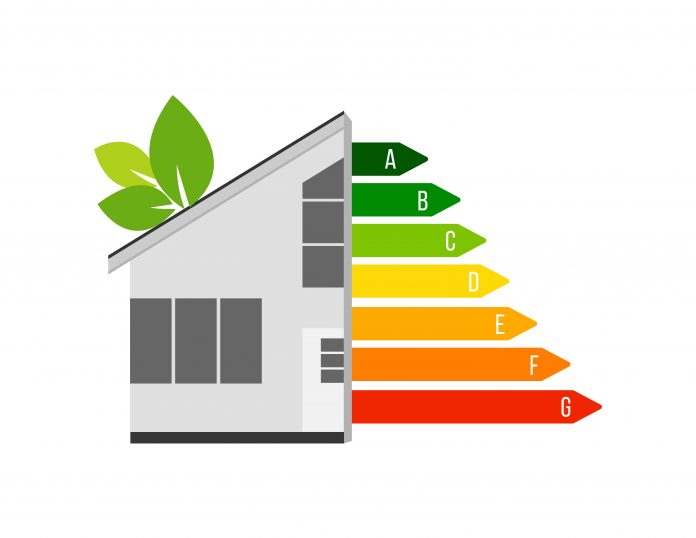Phil Kelly, head of sustainability and building physics at Ramboll, discusses the challenge of staying ahead of the curve with sustainable building regulations, ahead of the Part L updates
With a target to meet net-zero carbon by 2050, there is an increasing emphasis on ensuring buildings are sustainable. But how do we define what exactly makes a home or office sustainable? It’s important that buildings are energy efficient and low carbon, whilst being functional and liveable, but legislation and market incentives can mean that not all of these elements are considered holistically.
Part L of UK Building Regulations for new homes currently sets legally-binding restrictions for overall carbon emissions and space heating energy demand only. A mixture of low-carbon technologies, enhanced fabric performance, district energy and renewables have all played a role in meeting these moving targets for over ten years. As improvements in fabric performance continue to be made, thus reducing space heating demand, the focus has shifted towards the carbon emissions associated with hot water and ventilation.
Part L carbon emissions targets
The carbon emissions targets set by Part L, alongside the industry’s modern-day good practice standards for air quality, acoustics and overheating, encourage building designers to consider more complex design solutions with bespoke user operational assumptions. However, none of these metrics are sufficiently captured within the Standard Assessment Procedure (SAP), the calculation methodology within residential Part L, which is already too generic to act as a true performance indicator.
If Part L does not allow the envisaged operational procedures to be adequately represented, should it continue to present energy and carbon emissions data to building occupiers? This has resulted in the ‘Performance Gap’ within the industry, and the point whereby carbon emissions can no longer be considered in isolation when making design decisions has already been reached. Legislation and regulation should reflect this reality by improving the link between Part L (Conservation of Fuel & Power) and Part F (Ventilation).
Changes to Part F and Part L building regulations
Having last been updated in 2013, the consultation for the proposed changes to Part F and Part L in 2020, which is set to be finalised 10 January, outlines some substantial changes aimed at furthering new residential design towards a net-zero carbon future.
The new carbon factors for fuel alone will encourage a shift towards electrically-fuelled energy strategies, in the hope that the National Grid will achieve its low-carbon targets. The Future Homes Standard (FHS), presented as part of the same consultation, includes few details beyond the aspiration to achieve a 75-80% reduction in CO2 emissions beyond existing standards. The proposal to adopt the FHS in 2025 coincides with the Committee on Climate Change’s (CCC) recommendation that no new-build homes are connected to the gas grid by the same year. Both recommendations have, however, missed the opportunity to address three key challenges that are pivotal in achieving the UK’s 2050 net-zero carbon commitment.
The emissions associated with a building’s entire lifecycle from cradle to grave excluding the operational energy consumption, are referred to as embodied carbon and can form up to 70% of the lifecycle carbon emissions of a development. Failing to adopt an analysis of and design approach towards lifecycle carbon could result in design solutions that incur greater embodied emissions during the construction of a building, in order to reduce emissions from energy-related activity during the operational phase, thereby moving the problem rather than directly addressing it.
Building performance
A building’s performance, as well as that of its respective systems, will fail to meet expectations if aggregated over a whole year. The efficiency of Air Source Heat Pumps (ASHP) and the carbon intensity of the electrical grid varies both hourly and seasonally. Electric ASHPs have been shown to pass the carbon emissions targets of the new draft London Plan (which incorporates a comparably decarbonised national grid) with flying colours, but is this system operating as efficiently, and with a low-carbon fuel source, on a cold, dark winter afternoon?
Part L does not go far enough to ensure a dwelling’s operational performance matches the design’s intent. Furthermore, with a significant lack of resource in Building Control departments, and inadequate non-compliance penalties, enforcement is already lacking. Successfully implementing Part L is therefore also linked to council local planning policy enforcement, where each council sets its own energy and carbon-related targets, as these are typically also based upon the SAP methodology, and must be submitted upon construction. The consideration in the Part L consultation that there may be ‘no further need’ to allow local authorities to set higher standards beyond building regulations from either 2020 or 2025 would, therefore, be disastrous.
The calculation process behind Part L of Building Regulations has always been envisaged to be a benchmarking process for properties of the same type across the entirety of the UK. The need to balance accuracy versus comparability is a constant challenge, especially as the carbon emissions targets become more stringent. In order to drive passive design improvements, the Target CO2 Emissions Rate (TER) in more recent versions of the regulations changes according to system choice and fuel type. Whilst this has reduced greenwashing, it has unintentionally reduced comparability through the absence of an absolute performance metric. It is therefore welcome to see in the current consultation that primary energy consumption is proposed to replace carbon emissions as the primary compliance metric for domestic building regulations in 2020.
Passivhaus standards
The growing popularity in the UK of the Passivhaus methodology for residential design is based not only upon its low-energy credentials but also due to the correlation between recorded and predicted performance, based upon an absolute energy metric. In some cases, local authorities allow the relaxation of certainly carbon emissions-related policies if Passivhaus certification is achieved. To counteract the ‘design-for-compliance’ culture in the UK market, perhaps Building Regulations should consider a similar flexible approach to encourage housebuilders to go beyond the legislative baseline. This would correlate well with the move towards primary energy consumption being the primary driver in 2020.
The role of Part L in helping the construction industry address the carbon emissions crisis is vital, reducing the energy consumption and carbon footprint of buildings. But through failing to consider the embodied carbon of buildings, along with a limited accuracy of the calculation process and lack of enforcement in compliance, there will be little consistency in the design expectations of buildings. There is some hope that the long-overdue updates to Part L will address these, but whether they will go far enough remains to be seen.
Phil Kelly
Head of Sustainability and Building Physics
Ramboll














